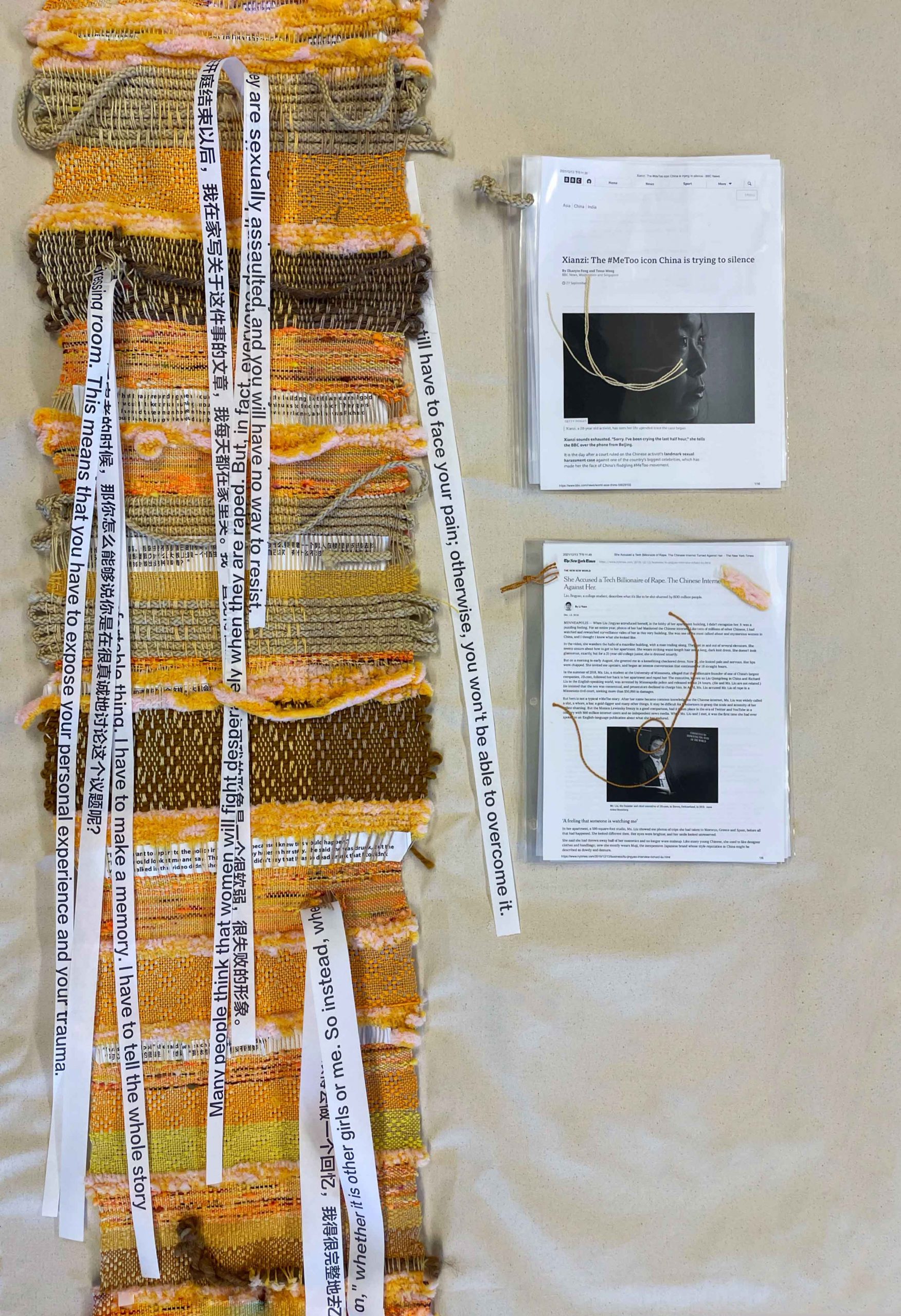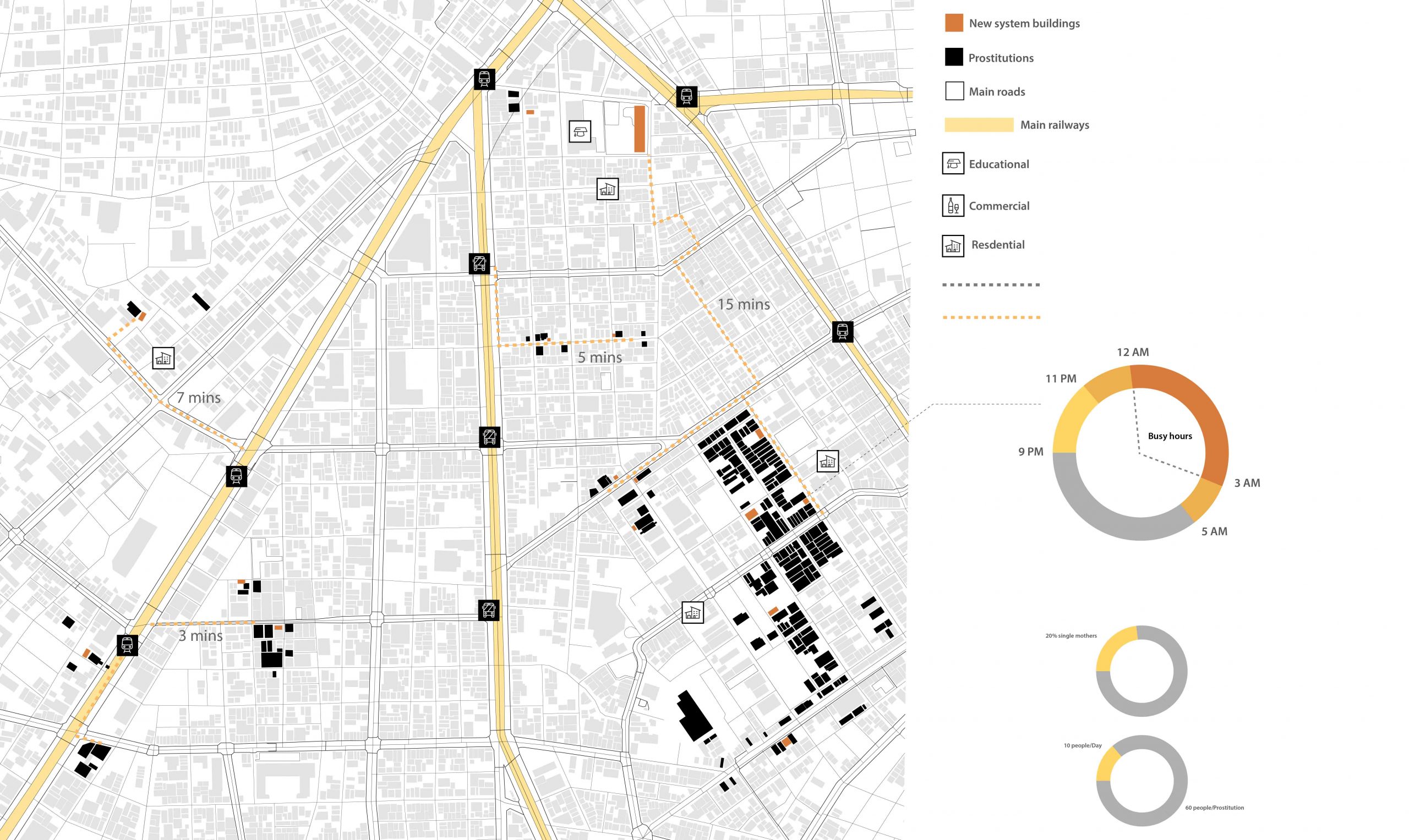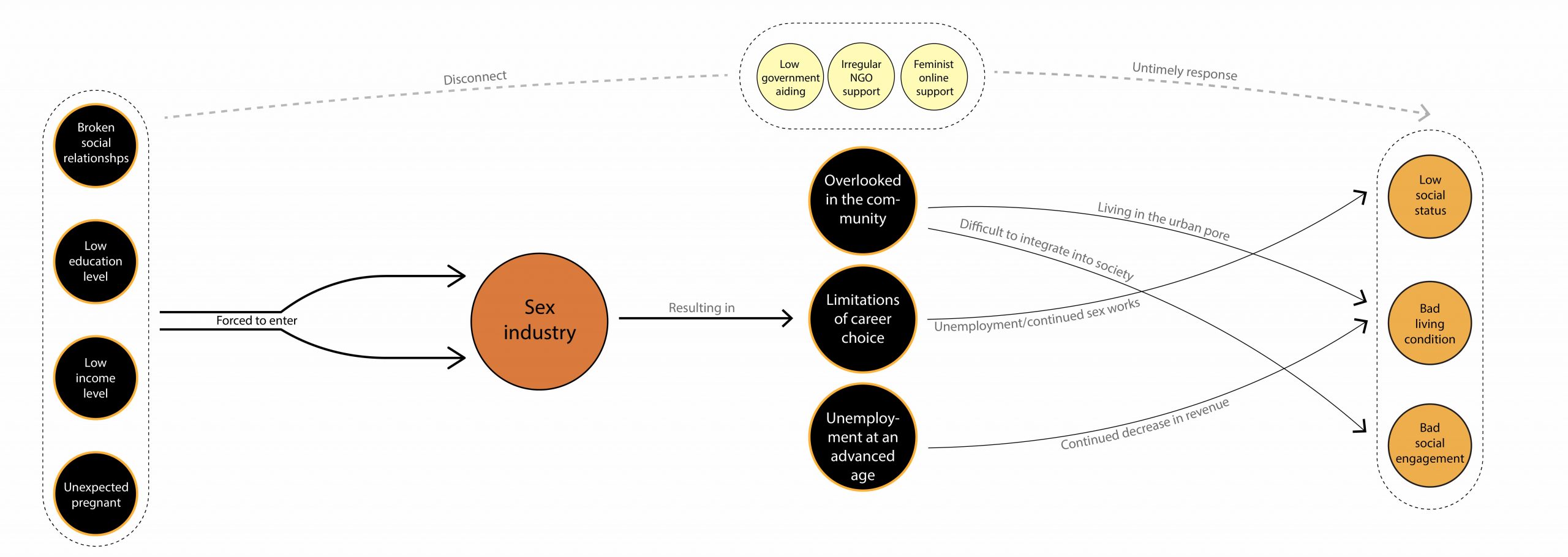Architecture Thesis Statement
The urban fabric of neighborhoods in Tokyo’s red districts are remnants of a male-dominant society and post-war city-building policies and formats that are distinctly hierarchical, exclusionary, and unfriendly towards the female body and diversity in general. As the majority of the Tokyo red districts, female sex workers are intentionally hidden and erased among the main urban structure. The architectural typologies and the material assemblages that created these typologies ignore and often hide the realities of marginalized groups in a society where the masculine desire exerts control over the fear of the female or the other. Garish, decorative facades and strait prostitution space conceal their living area and deplete their social engagements. Sex workers are a sub-group of those others that are visibly present, tolerated, and at the same time comfortably ignored.
Asian societies indifferently evaluate the sex industry as a symbol of lasciviousness and decadence. As a result, sex workers are abridged from the general community. Sex work, among all the variable milieus, is spatially infiltrated within the urban fabric of specific neighborhoods. The relationship between transportation hubs, residential and mixed-use typologies, and local socio-economic structures allows the interaction between legal and extralegal arrangements to coexist. These are spatial constructs that manifest as patterns embedded within the architectural and urban fabric – becoming a social architecture within a physical architecture.
The thesis explores a single question: How can the social architecture, or even more, a hierarchical architectural system, be disrupted by insertions, erosions, and reconfiguration of the physical architecture? A viable approach of architecture system can be inserted into this highly-density metropolitan: a mixture of centralized buildings, spontaneously developed facilities, and online platforms. These interventions aim to enable sex workers to take control of their situation by creating spaces within which a social network of support can emerge as alternative spatial typologies within the existing urban fabric. Such interventions can camouflage and protect the worker while building connections between support groups and alternative employment opportunities. The spatial interventions will create a contingent condition in anticipation of a more permanent future outcome.



